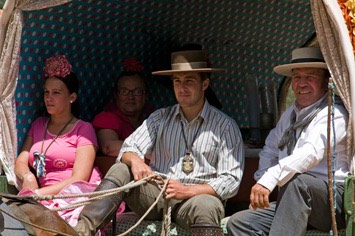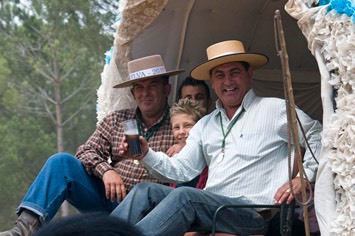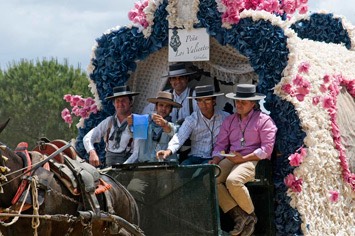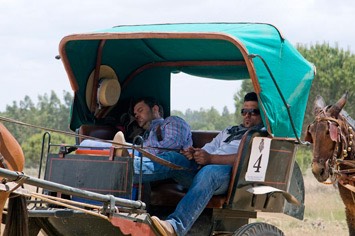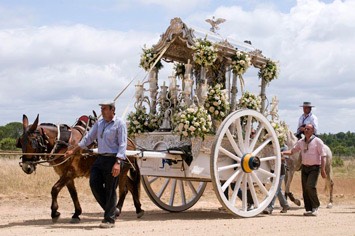 The annual pilgrimage or Romería to El Rocío is one of the most spectacular and colourful cultural events in Andalucia. Despite being dressed in Roman Catholic garb, there are undertones of an ancient goddess worshipping cult. Music, dance and drink play very important parts in the proceedings!
The annual pilgrimage or Romería to El Rocío is one of the most spectacular and colourful cultural events in Andalucia. Despite being dressed in Roman Catholic garb, there are undertones of an ancient goddess worshipping cult. Music, dance and drink play very important parts in the proceedings!
This was the first year since buying a house in Spain that we were there for Pentecost, the time when the Romería, the big pilgrimage to the little town of El Rocío, takes place. During this pilgrimage, so called brotherhoods (hermandads) make their way from their home towns and villages throughout the whole of Andalucia to Rocío. Some come from places further afield in Spain and some come from as far as Brussels!
Their destination is the small church (ermita) in El Rocío, in which a statue of the virgin of El Rocío is kept. This wooden statue dates from the time of the re-conquest, and legend has it that a shepherd, or some say a hunter, found her in a hole in a tree. He intended to take it home to Almonte, but, when he fell asleep during his siesta, the virgin made her way back to where he had first found her. So the people from Almonte decided to build her a shrine on this spot, which is now El Rocío. The virgin is known by many names, mainly as the Virgin of the Dew (Rocío in Spanish), the Lady of Rocío, the White Dove (Blanca Paloma) and the Shepherdess of the Marshes (Pastora de las Marismas).
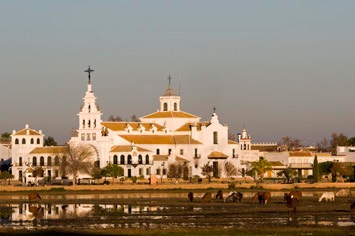
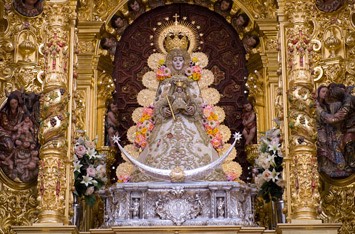
Adoration of the Virgin is a conspicuous feature of Roman Catholicism here, where it seems to represent the vestiges of an older religion that has been incorporated and Christianised by the Roman church. Many of the symbols associated with the Virgin are also found in the myths and images of ancient goddesses, particularly the Greek Aphrodite and her Phoenician equivalent Astarte. Both, for example, are associated with doves, usually depicted as a white dove, the Blanca Paloma. Both Aphrodite and Astarte were popularly adored as a goddess of love, beauty and fertility.
The pilgrimage is called La Romería and the pilgrims are known as romeros. According to dictionary definitions, the origin of the word romero is derived from “those travelling towards Rome”, but is this a case of Romanisation – an older custom taken over by the Roman church and its name given a more politically correct origin?
The romeros, especially those travelling on foot, traditionally carry a wooden staff, to the head of which they tie a bunch of rosemary. Rosemary in Spanish has the same name – romero. The Latin name for rosemary, rosmarinus means “dew of the sea”. Aphrodite rising from the sea was said to be draped in garlands of rosemary. Surely it is no mere coincidence that romeros decorated with romero, the dew of the sea, make a pilgrimage to the shrine of the Virgin of the Dew? It seems likely that the term Romería is derived from a word used for pilgrimages in honour of a pre-Christian goddess – the Virgin of the Dew for whom rosemary was a sacred herb.
Association of the Virgin with the ancient goddess is reflected in one of the main symbolic elements adorning her statue – a silver bow-shaped device that resembles a crescent moon or a pair of bull's horns. Both were associated with the goddess.
The romeros travel by different means: some on foot, many on horse or mule back, in carriages and wagons pulled by mule trains or – in keeping with modern times – on trailers pulled by tractors. Depending on how far they have to travel they start around a week before the Pentecost weekend. Most of the time the brotherhoods travel on traditional routes through the pine forest, some even trekking through the otherwise inaccessible parts of the National Park of Doñana! At night, they sleep in temporary camps. The brotherhoods’ processions are each led by an ornately decorated shrine, which holds a banner with the picture of the virgin embroidered on it. The shrines are decorated with garlands of fresh flowers and are usually pulled by either mules or oxen. The rest of the pilgrims follow behind.
The shrine leads the way:
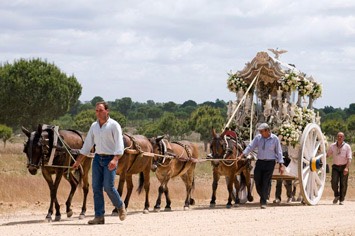

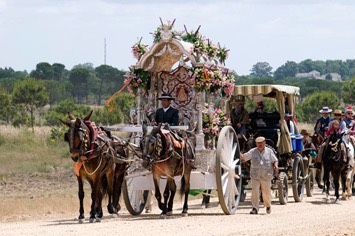
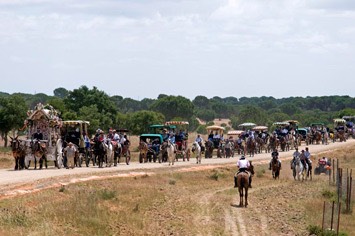 Some travel on foot:
Some travel on foot:
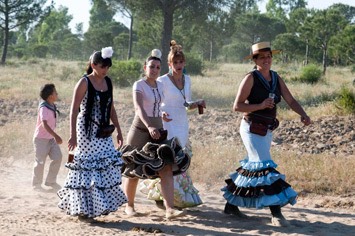
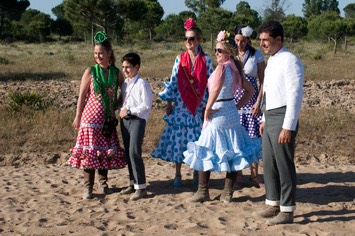 ... or on horse-back … :
... or on horse-back … :
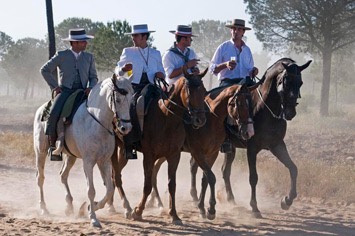
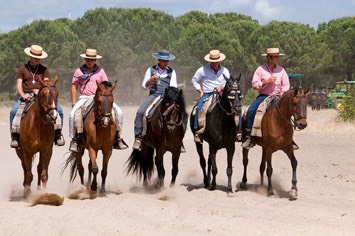
... in little carts... :
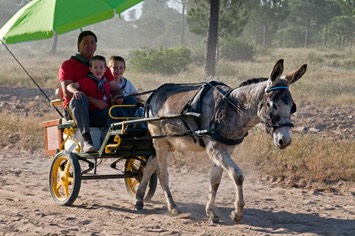
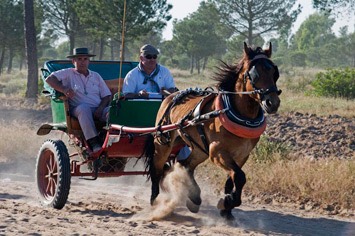 … pretty carriages, … :
… pretty carriages, … :
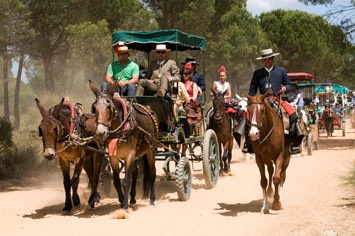
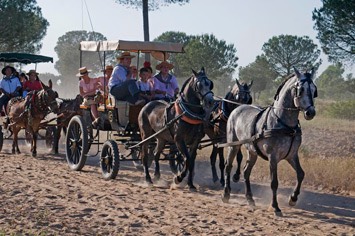 … or wagons pulled by mule trains, or a modern alternative:
… or wagons pulled by mule trains, or a modern alternative:
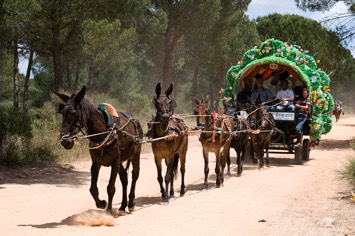
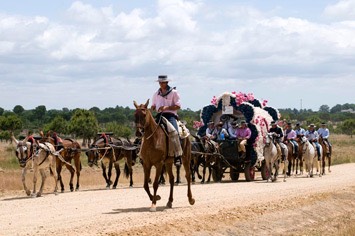
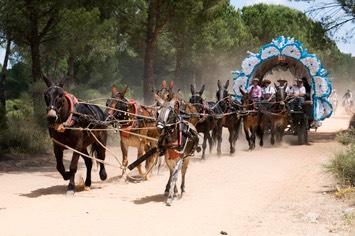
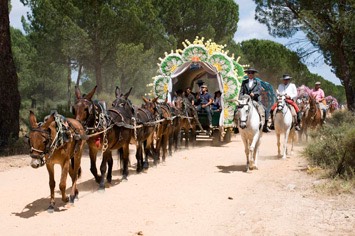
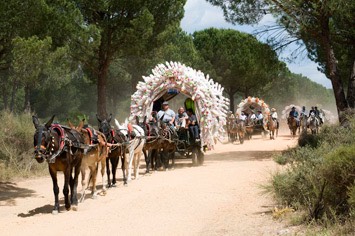
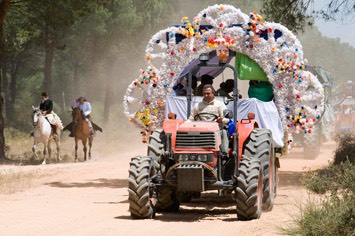
The wagons are all beautifully decorated with paper flowers and often little scenes from their home towns. The wagon from Huelva bears a scene depicting the city’s statue of Christopher Columbus and lots of miniature Romería wagons passing it. All wagons and carriages overflow with happy pilgrims. Music plays a very important role and there are always guys with guitars, sometimes playing them even while riding along. The pilgrims sing away heartily, having a great time!
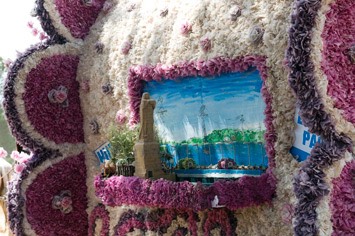
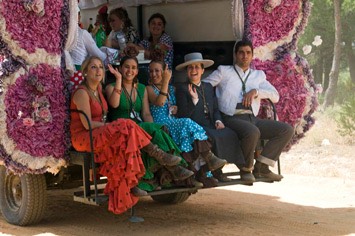
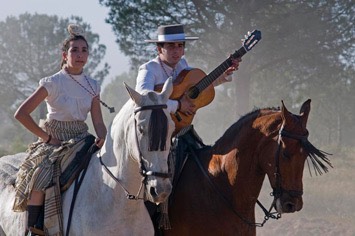
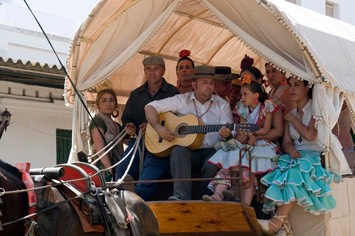
Probably even more important than the music is alcohol! Pretty much everybody has a glass full of booze of one sort or another in his or her hand at all times. And all horsemen have to be capable of cantering along nonchalantly without spilling a single drop! The pilgrims are all extremely friendly and welcoming, and we were frequently offered drinks and food from the passing wagons. We were even invited to jump onto wagons and join them! Hospitality is key during the Romería. Many of the pilgrims appeared to be well oiled at all times of the day and night. One guy riding past us on a small mule with a mate and a pretty lady (yes, all three of them on one mule!) spotted our video camera and called out, introducing his pals as John Wayne and Rita Hayworth! It was amusing to see how they suddenly all spoke some English when it came to showing off for the cameras!
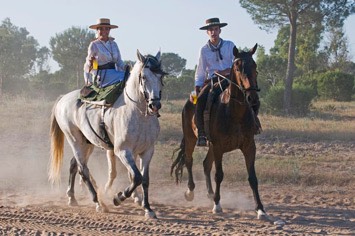
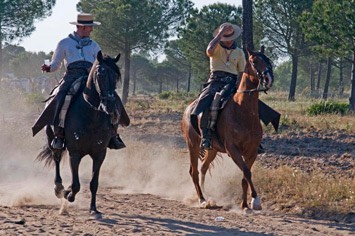
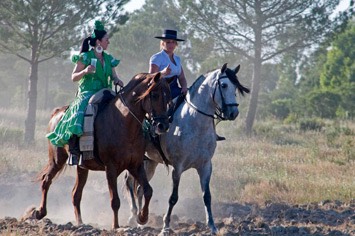
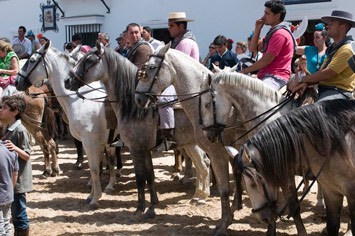
Most of the pilgrims drink continually and carry ample supplies in the wagons. However, the horses get thirsty too, and along the route the processions stop where there are water troughs for the horses. A short siesta naturally follows under the pine trees.
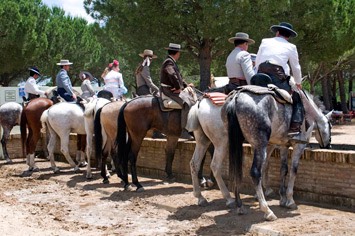
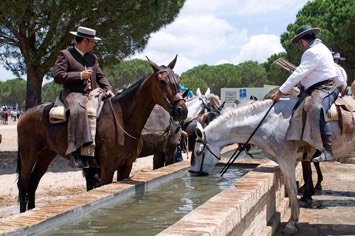
Eventually, all the brotherhoods converge on El Rocío, following a strict schedule. Here every brotherhood has their own big building, housing not only countless pilgrims but also horses, mules and carriages. These photos show the brotherhood of Moguer arriving at their big house, centrally located next to the church. First to arrive are the most important horsemen, and all the people walking on foot crowd around the shrine, which at this point is pulled by two splendid oxen. A single bell tolls as the shrine gets manoeuvred into its special niche at the front of the house, and then lots of “viva’s!” get shouted. There is one “viva” for every name of the virgin, a “viva” for the hermandad and more “viva’s” for whatever else comes to mind! After that the celebrations begin and the singing and drinking continues.
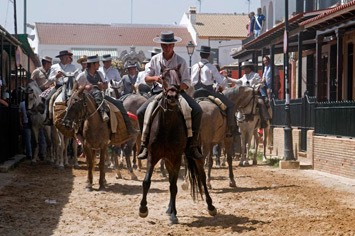
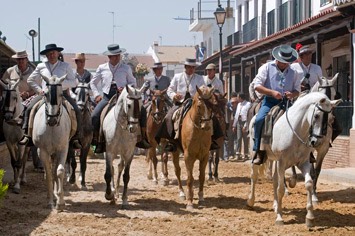
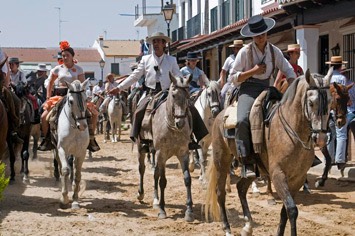
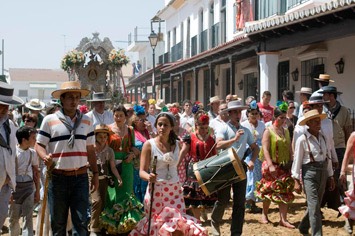
With the arrival of the pilgrims the whole character of Rocío changes. For most of the year it is a ghost town with sand streets (yes, there’s no tarmac in sight!) and few permanent inhabitants. Some weekends, like big catholic holidays, see an influx of people, but, for the duration of the Romería, a million or more people crowd into town! Empty houses suddenly spill over with people, flamenco is played on guitars, with people singing and dancing along on every corner. Real estate is impossible to get at this time of the year, and prices for houses start at 500,000 Euros!
People dress in their best clothes, changing at least once every day. Apparently, some families save up the whole year in order to pay for this one week in Rocío. Food and drink need to be paid for, as well as the splendid looking flamenco dresses for the ladies that start at around 100 Euros! However, at least for the spectators, it’s worth it! The ladies are very colourful and pretty to look at, but, even with their finest dresses, most wear heavy leather boots.
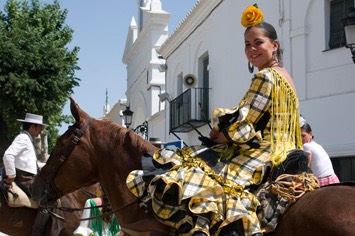
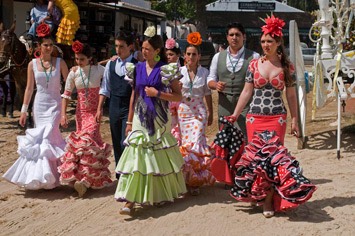
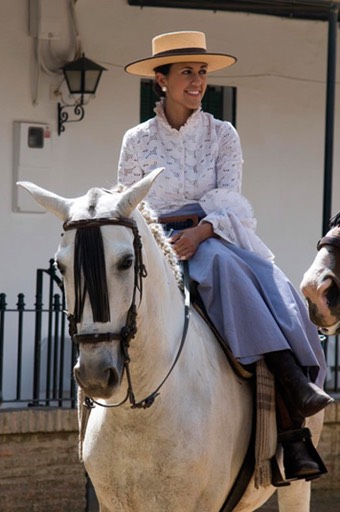
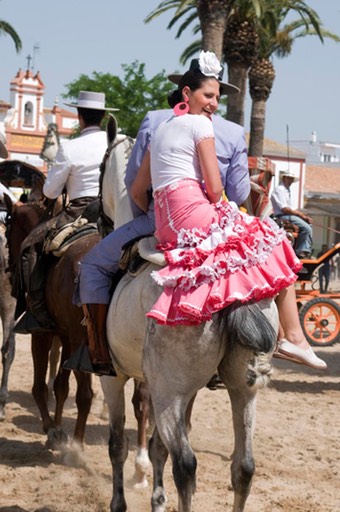
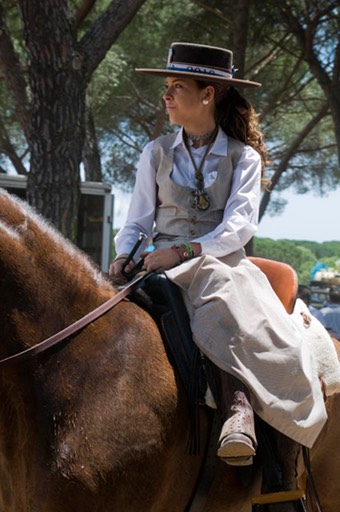
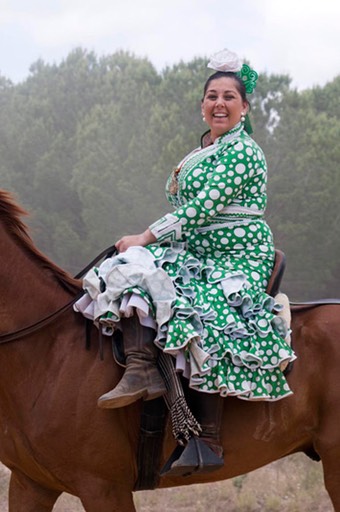
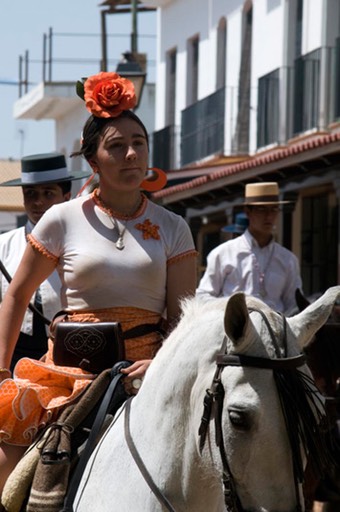
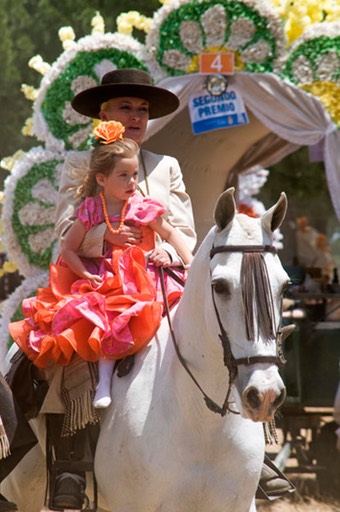
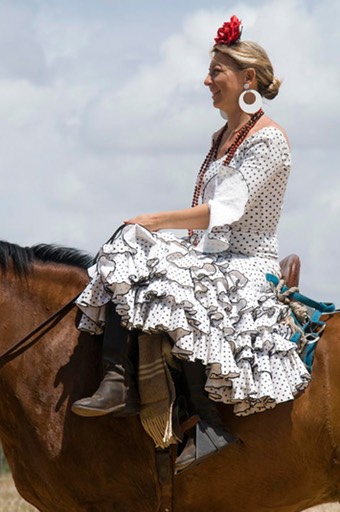
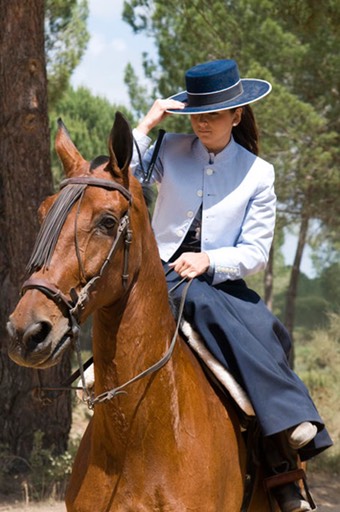
The men wear tight trousers with leather chaps and short jackets over white shirts. And all wear the obligatory wide-brimmed hat. Although not as colourful as the ladies, these gentleman look very smart too! Obviously, there are always exceptions (see last photo)…
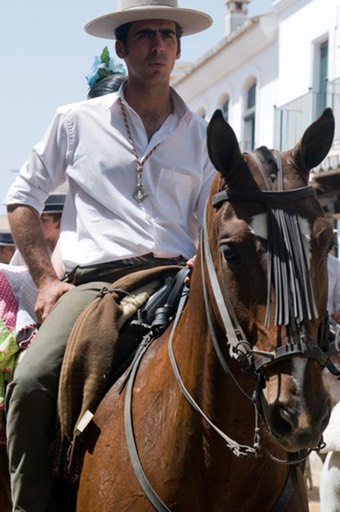
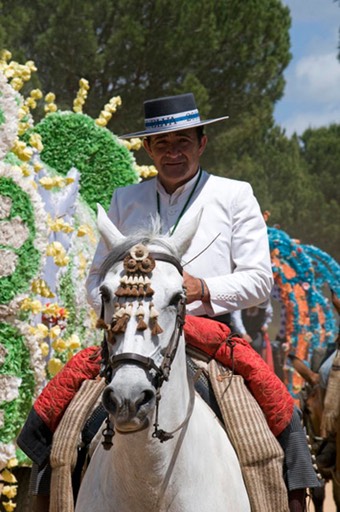
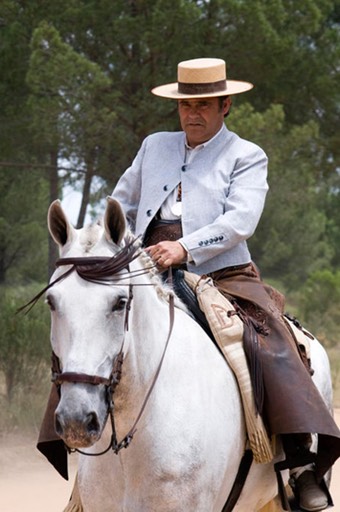
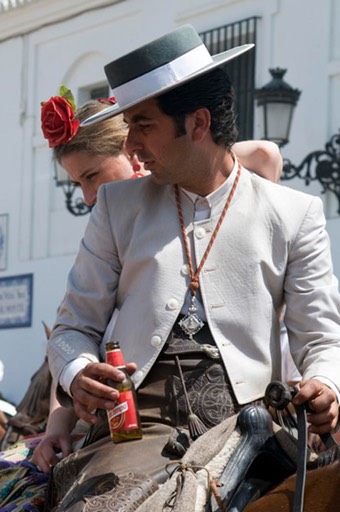
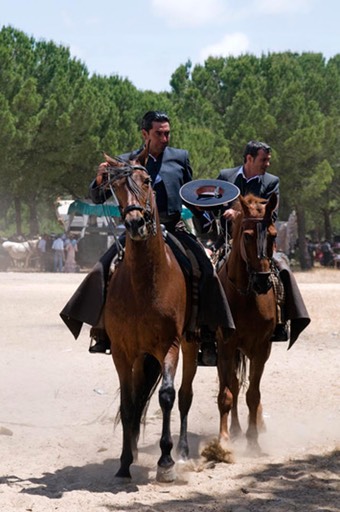
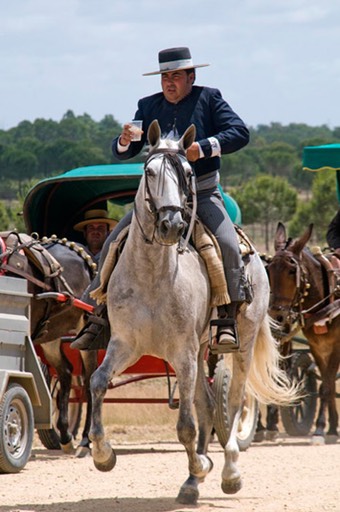
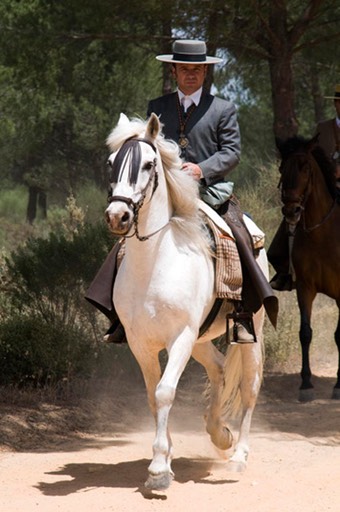
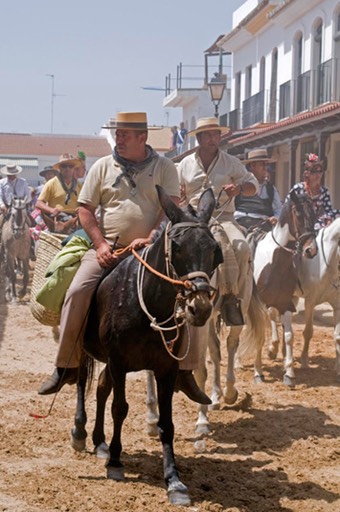
Everywhere one looks there are great-looking characters, be they young, middle-aged or old. But everyone is having a great time.
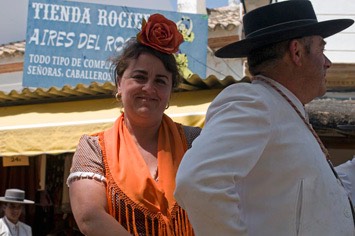
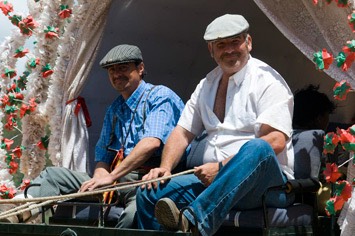
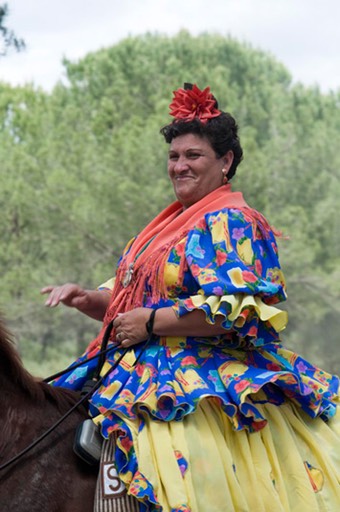
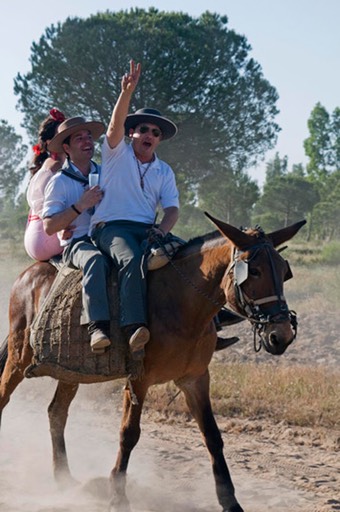
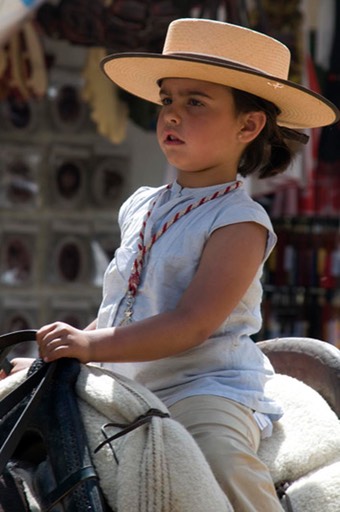
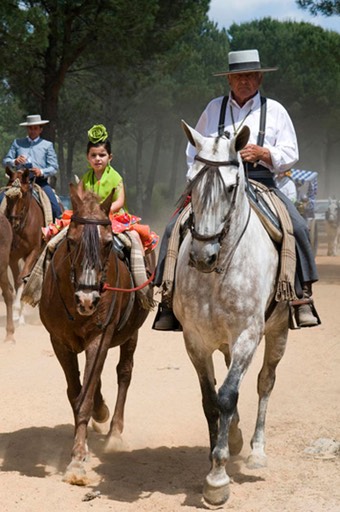
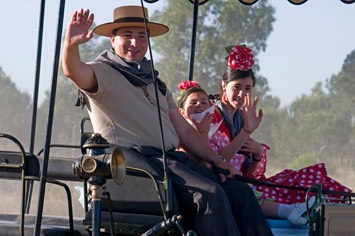
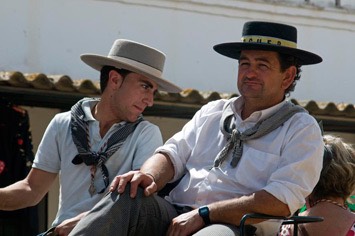
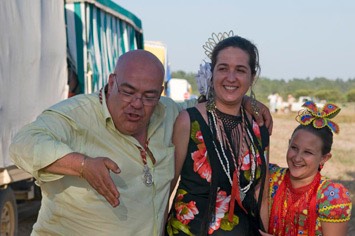
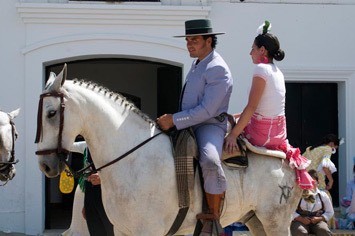
The police are very busy during the Romería, as each brotherhood has its own escort of two police cars, one in front and one behind, who stop all normal traffic if necessary. The pilgrims have right of way, even if this means that the rest of the traffic has to wait for half an hour or more! However, even with Rocío being full of noisy people, nothing untoward ever seems to happen. There are horses and carriages and lots of people on foot everywhere, but most horses and mules are stoically calm and never flinch, no matter what goes on right next to them.
The highlight of the Romería unfolds in the middle of the night of Whit Sunday to Monday. At first there is a service on one of the big squares. Although a lot of people go, it doesn’t seem to be considered an event that every pilgrim participates in. After that the standards of the brotherhoods get paraded past the church. During this part of the proceedings, more and more people gather outside the church, until the whole space is filled with people and it is impossible to move. Between two and three o’clock, some lads from Almonte have to jump over the metal fence inside the church to retrieve the virgin and carry her on their shoulders. As soon as she appears in the door of the church, the masses go crazy! Everybody wants to touch the virgin, so very often the float on which she is carried just seems to disappear in the crowds. Amazingly, she seems to get away unhurt most of the time, with only minor damage to the float! The virgin then gets carried around the whole of Rocío and visits the buildings of each of the brotherhoods. She can still be doing her rounds at midday of Whit Monday!
Most pilgrims stay at least one more day in order to continue celebrating. Eventually, they start heading back the same way they arrived. After at least one week of non-stop partying and drinking, many pilgrims appear to be pretty wiped out and rely on their horses and mules to follow the others home! Overall the atmosphere is somewhat quieter than on the way to Rocío, but drinks are still ever-present. It is amazing, though, that so many people just take two weeks off work to celebrate this event every year! Where else would this be possible?
